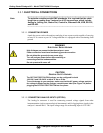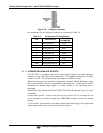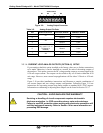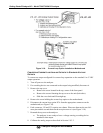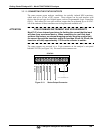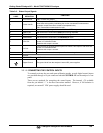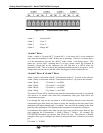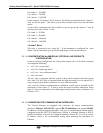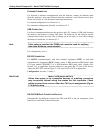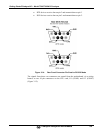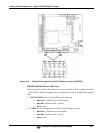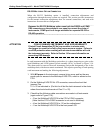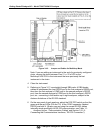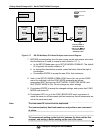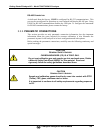
Getting StartedTeledyne API – Model T300/T300M CO Analyzer
Teledyne Analytical Instruments 52
CO Alarm 2 = 100 PPM
CO
2
Alarm 1 = 20 PPM
CO
2
Alarm 2 = 100 PPM
In this example, CO Alarm 1 & CO
2
Alarm 1 will both be associated with the “Alarm 2”
relay on the rear panel. This allows you do have multiple alarm levels for individual
gasses.
A more likely configuration for this would be to put one gas on the “Alarm 1” relay &
the other gas on the “Alarm 2” relay.
CO Alarm 1 = 20 PPM
CO Alarm 2 = Disabled
CO
2
Alarm 1 = Disabled
CO
2
Alarm 2 = 100 PPM
“A
LARM 4” RELAY
This relay is connected to the “range bit”. If the instrument is configured for “Auto
Range” and the instrument goes up into the high range, it will turn this relay on.
3.3.1.8. CONCENTRATION ALARM RELAY (OPTION 61) AIR PRODUCTS
CONFIGURATION
In the Air Products configuration, the 4 relay alarm outputs (AL1-AL4) on the rear panel
are configured differently..
AL1 is for “system okay”,
AL2 is for “high range status”
AL3 is for “zero calibration status”
AL4 is not used
The AL1 relay is energized when the system is okay and de-energized when the system
has a fault. The AL2 relay is energized when the high auto-range is in use and and AL3
relays energize when the the instrument is in zero calibration mode.
Also, in the Air Products configuration, an additional control input is available on this
instrument. Control input “C” is used to select the range for remote calibration. When
input C is low, the instrument selects high range during contact closure calibration. See
Section 6.15.12.
3.3.1.9. CONNECTING THE COMMUNICATION INTERFACES
The T-Series analyzers are equipped with connectors for remote communications
interfaces: Ethernet, USB, RS-232, optional RS-232 Multidrop, and optional RS-485.
In addition to using the appropriate cables, each type of communication method must be
configured using the SETUP>COMM menu, Section 6. Although Ethernet is DHCP-
enabled by default, it can also be configured manually (Section 6.5.1) to set up a static
IP address, which is the recommended setting when operating the instrument via
Ethernet.



